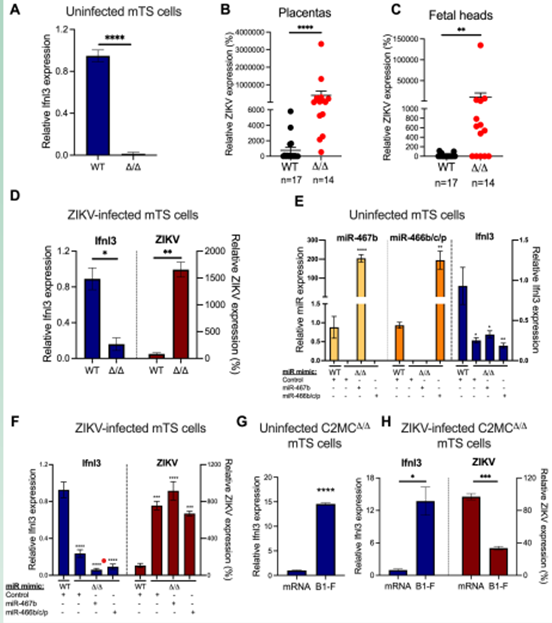Advantages:
- Enhanced understanding of improved prenatal protection: Discovered a novel mechanism by which SINE RNA mediate intrinsic antiviral resistance in the placenta
- Opens the door to therapeutic intervention
Summary:
Addressing a fundamental challenge in prenatal health, this research investigates how the placenta at the maternal-fetal interfaces has developed a unique antiviral defense mechanism. Unlike somatic cells which require antiviral signals to mediate interferon (IFN) induction, human synctiotrophoblasts constitutively produce type III interferons, even in the absence of a viral infection, by unknown mechanisms.
The researchers studied the RNA transcripts of short interspersed nuclear elements (SINEs), which are non-autonomous retrotransposons that are embedded in the primate-specific cluster on chromosome 19 (C19MC) and in the rodent-specific mircoRNA cluster on chromosome 2 (C2MC). They demonstrated that SINEs RNA triggers a viral mimicry response that induces type III interferons and confers antiviral protection during pregnancy in hemochorial placentas of primates and rodents, underscoring the integral part played by SINEs in innate immunity. These discoveries mark a significant advancement in our understanding of placental immunology and innate defense mechanisms.

Fig 1 In vitro, C2MC knockout (Δ/Δ) mouse trophoblast stem (mTS) cells, and in vivo, C2MCΔ/Δ placentas, both exhibit a loss of their inherent IFNL3 expression and associated antiviral protection. However, the introduction of B1 SINE overexpression successfully reinstated viral resistance in C2MCΔ/Δ mTS cells.
Desired Partnerships:
- License
- Sponsored Research
- Co-Development